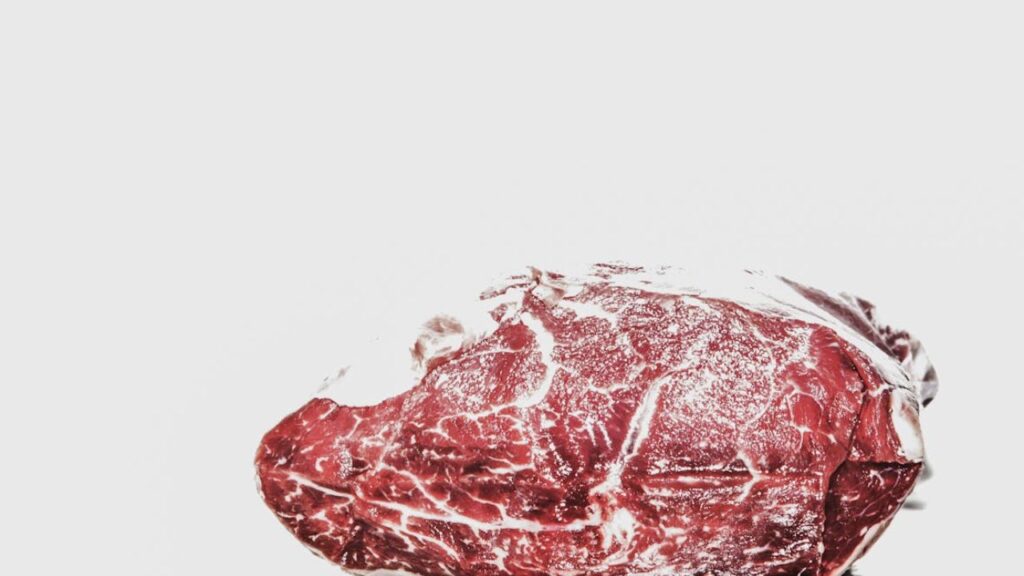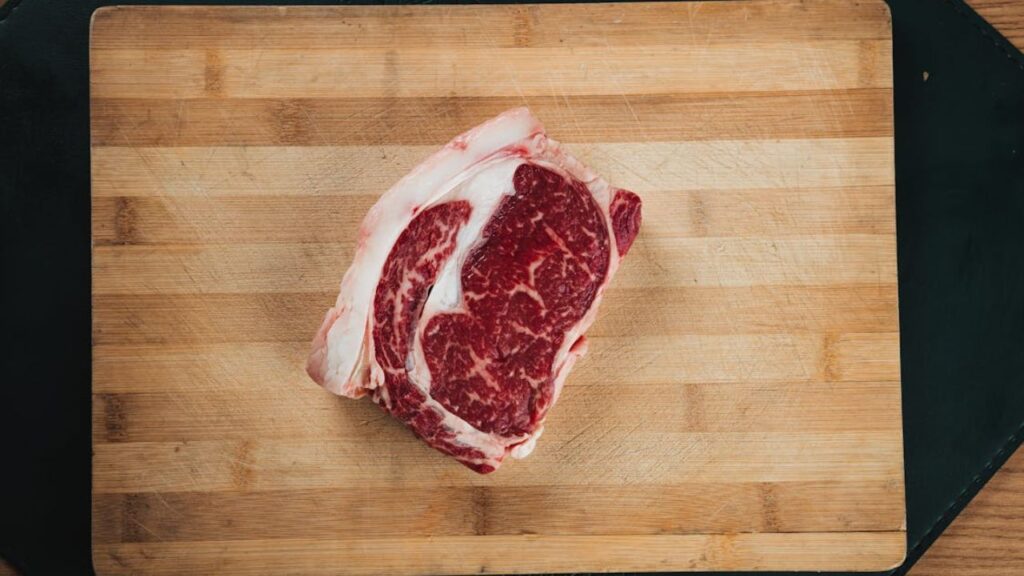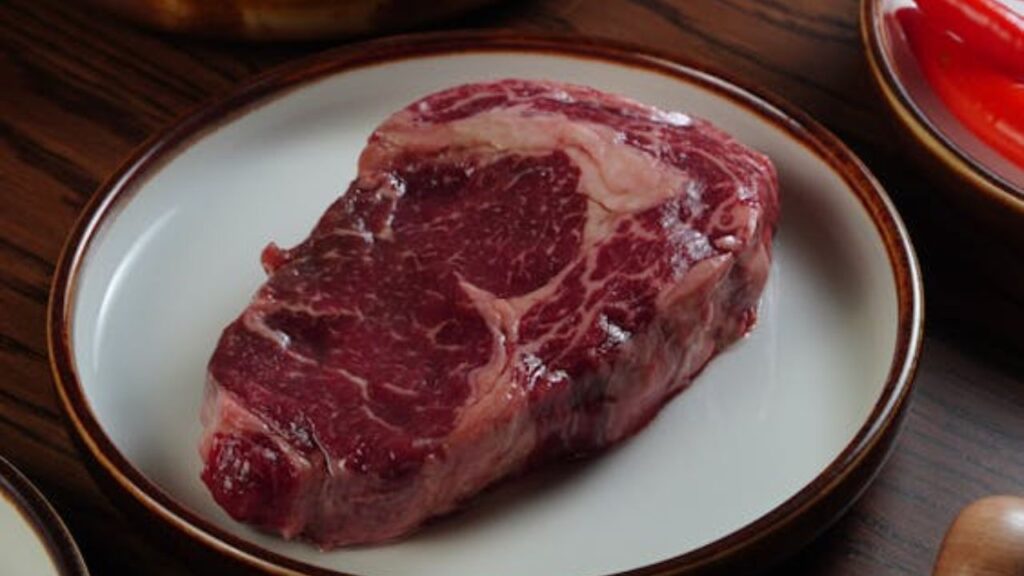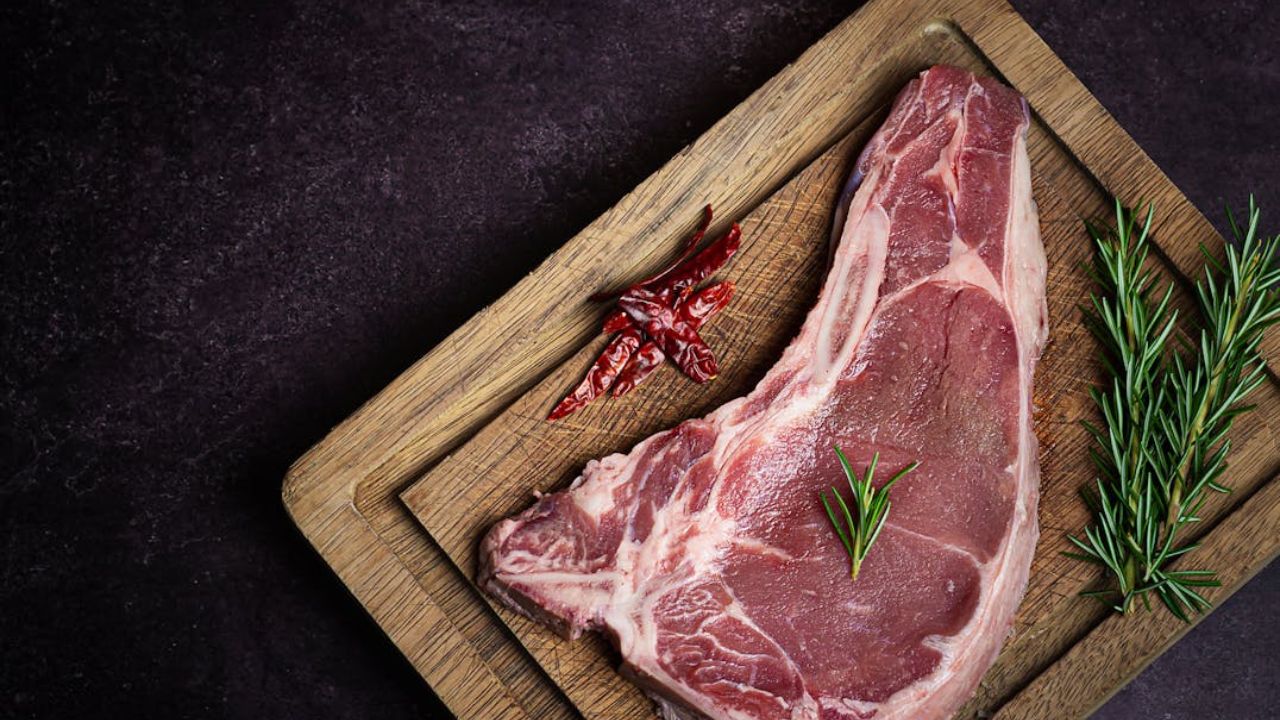Regarding bulk meat purchases, few choices are as flexible and reasonably priced as getting a side of beef. A side of beef is a sensible answer for both families trying to cut down on groceries and home cooks trying to fill their freezer. Everything you need to know—from what side of beef comprises to how to store, prepare, and maximize it—will be broken out in this book. Let us start right now!

What Is a Side of Beef?
A side of beef is one half of a split lengthwise cow. whichever is the size of the creature, a side you buy will typically weigh between two hundred and three hundred pounds. This covers ground beef, ribs, stew meat, steaks, and roasts among other cuts. Consider it as a “bulk buy” offering every component of the animal, from rougher sections intended for slow cooking to premium cuts like ribeye. Purchasing a side of beef generally at a cheaper cost per pound than buying individual cuts means you will have a freezer full of premium protein for months, usually.
Breaking Down the Cuts: Understanding Beef Primals
Primally cut sides of beef consist of the chuck, rib, loin, round, brisket, plate, and flank. Every primordial carries particular kinds of meat. For ground beef or pot roasts, for instance, the chuck is best; the loin produces soft steaks like T-bones and filet mignon. Knowing these divisions enables you to maximize every component and create meals. Ask your butcher for a cut sheet if you are new to purchasing a side of beef; this describes how the meat will be handled and allows you to adjust it to your tastes—for ground beef, for example, steak thickness or lean-to–fat ratios.
Why Buy a Side of Beef? Cost and Quality Benefits
Buying a side of beef makes wise financial sense. Although the initial cost might appear high—usually between 1,000 and 1,000–2,500—the price per pound is generally 20–40% less than pricing at a supermarket shop. You are also paying for quality; sides of beef usually come from locally grown, grass-fed, or grain-finished cattle, guaranteeing fresher, more ethically produced meat. You also escape the pre-packed supermarket cut markup. This bulk buy provides a consistent supply of protein and reduces many supermarket visits for big families or enthusiastic meal planners.
How to Choose the Right Side of Beef for Your Needs
Not every side of beef is exactly like another. Look first for a respectable farmer or butcher raising animals responsibly and compassionately. Inquire about the animal’s age, diet—grass-fed against grain-fed—as well as if antibiotics or hormones were utilized. Choose then how you like the meat handled. Are you more of a thicker steaks? Increased ground beef availability? Clearly state this when you order. Additionally take into account freezer space; a side of beef needs around 8 to 10 cubic feet of storage. Should it be too much, then dividing a side with a buddy or choosing a quarter beef might be more appropriate.

Storing Your Side of Beef: Freezing Tips for Longevity
Maintaining freshness on your side of beef depends mostly on appropriate storage. To stop freezer burn, carefully wrap single slices sealed by vacuum bags or refrigerator paper. To keep orderly, label every packet with the cut kind and date. Long-term storage—up to 12 months—is best from a deep freezer set to 0°F (-18°C). A normal freezer also works for shorter-term usage—3–6 months. Meat should never be refreezed or thawed as this compromises safety and texture. To quickly retrieve what you need for meals, arrange your freezer according to cut type.
Cooking a Side of Beef: From Tough Cuts to Tender Steaks
One of the pleasures of having a side of beef is trying many cooking techniques. On a grill or in a hot pan, tender cuts like sirloin or ribeye highlight themselves. Low-and- slow methods like braising or a slow cooker help tougher cuts—like chuck roast or brisket. Ground beef is infinitely flexible; consider burgers, meatballs, or chili. Keep in mind bones as well. For soups and stews, beef bones provide nutrient-dense broaths. Online recipes or cookbooks targeted on beef might be rather helpful if you’re not sure how to prepare a given cut.
Nutritional Value of a Side of Beef
Important minerals contained in beef are protein, iron, zinc, B vitamins. The advantages mentioned above are offered in quantity by a side of beef. Lean beef, for example, contains about 25 grams of protein in a 3-ounce serving that helps to develop and repair the muscles. At the same time, the zinc helps to strengthen the immune system while iron helps in the oxygen transportation in blood. With choosing grass-fed Beef, the omega 3 fatty acids that are beneficial to the heart can be increased. To make a well-balanced diet, complement your meals with vegetables, complete grains, and good fats to meat.
Side of Beef vs. Store-Bought: Which Is Better?
Although purchasing separate pieces from a supermarket is handy, side of beef has unparalleled value and quality. Often traveling great distances, store-bought beef loses freshness along the way. The side of beef lets you know precisely where your meat comes from and prepared all at once lowers packing waste. You also get cuts you would not often find, which inspire culinary inventiveness. Smaller purchases might be more sensible, though, if upfront expenses or freezer space are a worry. Analyze your home’s needs to determine the best course of action.

Sustainable Eating: The Environmental Impact of Buying in Bulk
Buying a side of beef may fit with an environmentally friendly lifestyle. Purchasing locally helps you lower the carbon footprint meat transportation causes. Supporting small farms sometimes involves advocating regenerative agricultural methods, which enhance soil quality and lower environmental damage. Using the entire animal—including harder cuts and bones—also reduces waste. If sustainability is important to you, before you buy, find out from farmers about their animal welfare and land management policies.
Budget-Friendly Meal Ideas for Your Side of Beef
Meal planning is easy when meat fills a freezer. Stuffed peppers, spaghetti sauce, or tacos call for ground beef. Sunday meals or shredded sandwiches might come from roasts. Quick evening grilling calls for steaks. Save bones for soup or risotto broth. In stir-fries or fajitas, tough cuts like flank beef taste great. Freeze portions for hectic days and batch-cook dishes like chili or casseroles. Rotating among cuts will help to keep meals interesting and prevent repetitious eating.
Side of Beef vs. Store-Bought Beef
| Feature | Side of Beef 🥩 | Store-Bought Beef 🛒 |
| Cost | Higher upfront cost, but 20–40% cheaper per pound over time. | Lower upfront cost, but higher per-pound prices for individual cuts. |
| Quality & Source | Locally raised, often grass-fed or grain-finished; know your farmer’s practices. | Mass-produced; origins and farming practices are rarely transparent. |
| Cuts Available | Every part of the cow: steaks, roasts, ground beef, bones, and specialty cuts. | Limited to popular cuts (e.g., sirloin, ground beef); specialty cuts cost extra. |
| Freezer Space | Requires 8–10 cubic feet (about half a deep freezer). | No freezer space needed—buy as you go. |
| Sustainability | Lower carbon footprint (local sourcing) and less packaging waste. | Higher transport emissions and plastic-heavy packaging. |
Conclusion
Anyone trying to save grocery shop visits, consume excellent meat, and save money will find a great alternative inside of beef. Like freezer space and initial fees, it calls for preparation; yet, the long-term advantages are well worth it. Whether you’re feeding a family, throwing get-togethers, or just like cooking, a side of beef presents countless ideas. Start by getting in touch with nearby butchers or farmers, then probe further into bulk purchases. Your taste sensations and future self will appreciate it.
FAQ’s
1. What exactly is a side of beef?
The half side of a cow which is cut through the middle will give a side of beef that weighs around 200 to 300 kilograms of meat. A bulk discount and variety, it brings cuts such as steaks, roasts, ground meat, etc.
2. How much freezer space do I need?
You will need eight to ten cubic feet of freezer capacity. Should it be excessive, think about dividing a side with a companion or choosing a smaller quarter beef.
3. Is it cheaper than buying individual cuts?
Absolutely! Though the upfront cost is more, a side of beef usually costs 20–40% less per pound than grocery store rates, particularly for quality, locally grown meat.
4. Can I customize the cuts?
Of course! Choose steak its thickness, lean-to–fat proportions over beef ground up, or ask about specific cuts working with your butcher. A “cut sheet” facilitates order customizing.
5. How long does it last in the freezer?
If placed in storage, it can last 12 months in the deep freezer (0 °F) and 3 to 6 months in the normal freezer. In order to maintain quality, stop thawing and refreezing.
